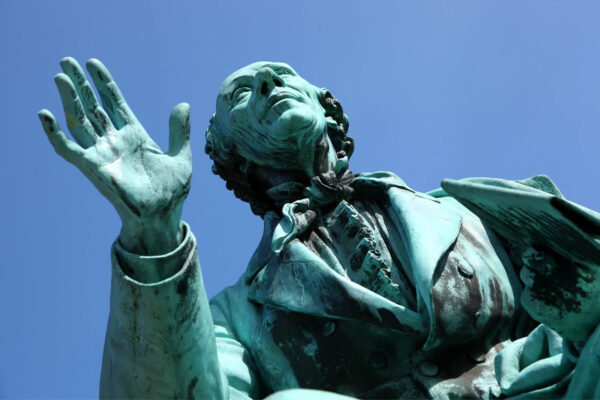Astrid Lindgren is one of the most famous children’s book authors of our time. Stories such as Pipi Longstocking, Emil of Lönneberga and We Children from Bullerbü have accompanied many people from an early age. The Swede is regarded as an extraordinary woman who not only campaigned for children’s and women’s rights, but also overcame many difficult situations in her private life.
The life of Astrid Lindgren
Astrid Lindgren was born Astrid Anna Emilia Ericsson on 14 November 1907 on the Näs farm near the small town of Vimmerby in southern Sweden. The almost 95 years of her life were anything but quiet. Find out here what Astrid Lindgren experienced, how she became a writer and which of her books were the most successful.
Astrid Lindgren, born Astrid Anna Emilia Ericsson, was a Swedish writer best known for her children’s and young adult literature. Her most important works include Pippi Longstocking, Emil of Lönneberga and Ronja the Robber’s Daughter, which have been translated into up to 70 languages.
| Born | 14 November 1907 in Näs near Vimmerby |
|---|---|
| Died | 28 January 2002 in Stockholm |
| Children | Lars Lindgren (1926-1986), Karin Nyman (*1934) |
| Most important works | Pippi Longstocking, Emil of Lönneberga, We Children of Bullerbü, Ronja the Robber’s Daughter, The Brothers Lionheart, Madita |
1907-1925: childhood and youth in Näs
Astrid Lindgren was born on 14 November 1907 on the Näs farm near Vimmerby in southern Sweden. She lived there with her mother Hanna, her father Samuel Ericsson and her three siblings Gunnar, Stina and Ingegerd. She has described her childhood in very positive terms on numerous occasions.
She started school at the age of six and, although this was not the norm for children of her social standing at the time due to the costs involved, she received nine years of schooling. Friends of the family are said to have persuaded her parents to let her attend school for longer than the usual three years at the time.
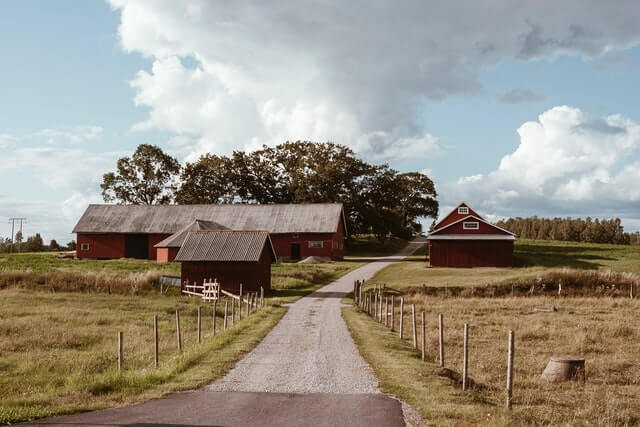
At school, Astrid learnt English, French and German. Overall, she was considered to be very hard-working and talented. Her first stories can already be found in her second grade workbook. She herself said that she swore at the time that she would never write a book because, contrary to the predictions of those around her, she did not want to become a writer.
After graduating from secondary school in 1923, she worked as a “house daughter”. This was an arrangement in which young women lived with a family, supported them in the household and in return were given access to an extended education.
Traineeship at Vimmerby Tidning: apprenticeship in journalism
At the age of 18, the editor-in-chief of the Vimmerby newspaper offered her a traineeship. At that time, an essay entitled On our farm had already been published in the newspaper when she was 13 years old. Astrid Lindgren accepted the offer and learnt a lot about journalistic work during her traineeship.
However, shortly afterwards she became pregnant by editor-in-chief Reinhold Bloomberg. Although he was not yet divorced at the time, he soon proposed to Astrid. She turned him down and travelled to Stockholm, where she began an apprenticeship.
The first years in Stockholm
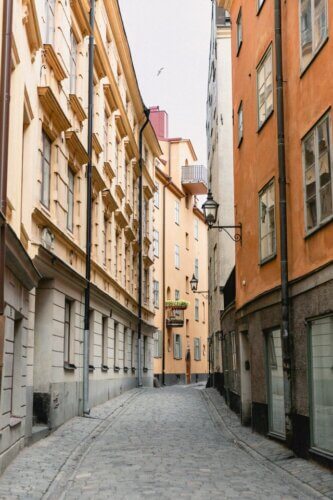
Towards the end of 1926, she travelled to Copenhagen. The reason was that the only Scandinavian clinic there, the Rigshospitalet, did not officially register births. This meant that she did not have to declare the father and was able to place her son Lars, called Lasse (born on 4 December 1926), with a foster family in Copenhagen while she trained as a secretary.
Rejecting Reinhold Bloomberg’s proposal and moving to Stockholm was a courageous decision in 1926. Unmarried mothers were not only threatened with a difficult financial situation, but also social stigmatisation and social exclusion. She therefore had no other option but to place her son in a foster family while she gained a professional foothold.
She completed her training as a secretary and took up a position at the Swedish Book Trade Centre in 1927. A year later, she was employed as a secretary at Kungliga Automobilklubben. It was there that she met her future husband, Sture Lindgren.
1930s: personal life and the start of her literary career
At the beginning of the 1930s, she brought her son to Stockholm because his foster mother was seriously ill. As he was also ill and the situation seemed serious, she took him to live with her parents on the Näs farm in the spring of 1931. Shortly afterwards, she and Sture Lindgren married, whereupon she took his name and became Astrid Lindgren. They had one child, Karin Lindgren (born on 21 May 1934), who now works as a translator under the name Karin Nyman.
Two of her Christmas stories were published in Stockholms Tidningen (Stockholm Newspaper) in the first half of the 1930s, which was the beginning of more regular publications of short stories. From 1937, she also worked as a stenographer for Harry Söderman, a Swedish professor of criminalistics.
War years: diaries and employment in the Swedish intelligence service
Lindgren wrote her famous war diaries, starting on 1 September 1939, the first day of the Second World War. During the war, in the 1940s, she worked in the letter censorship department of the Swedish Intelligence Service. This gave her extensive insight into various aspects of the war, which is reflected in her diaries.
From 1939 to 1945, she was increasingly active as a writer. The idea for Pippi Longstocking, for example, came about when her daughter was ill in bed and wanted to hear stories about Pippi Longstocking, whose name she had just made up. Further, Lindgren published her first book, which featured various car journeys. Her debut novel, however, is Britt-Mari eases her heart, whose manuscript won her second place in a writing competition.
The publisher Rabén & Sjörgen, which had initially rejected the manuscript for Pippi Longstocking, subsequently accepted the revised version and hired Astrid Lindgren as head of the children’s book department.
Life after 1945: Astrid Lindgren as author and activist
After 1945, Astrid Lindgren wrote many more books while maintaining her part-time employment at Rabén & Sjörgen. Between 1945 and 1985, she wrote most of the famous children’s and young adult literature for which the Swedish author is so well known today. Her son died in 1986. She cultivated many pen friendships and took an active part in social and political discussions as well. When she died on 28 January 2002 at the age of 94, a large funeral was held at which a girl and a horse walked behind the coffin in memory of Pippi Longstocking. Today you can even take a virtual tour of the flat where she lived for 60 years.
Activism: animal, child and environmental protection
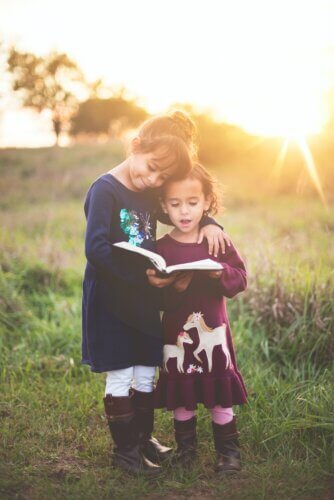
Throughout her life, Astrid Lindgren was particularly committed to children’s and animal rights. But she was also involved in political issues. She was a member of the “Right to our death” association, which campaigns for the right to a self-determined death. In this context, her book The Brothers Lionheart was even debated in the Swedish parliament because she was accused of glorifying suicide in the chapter “The Saga of Death and Nothing but Death“.
In her works, she campaigned against US racial segregation in the 19th and 20th centuries, for example, as can be seen in Kati in America, where the protagonist stands up for discriminated groups of people. She also founded the Solkatten Foundation for children with disabilities.
Even today, the Astrid Lindgren Company, which still looks after the Swedish author’s work, is involved in charitable activities. Its Pippi of Today foundation, for example, supports girls on the run. The proceeds from the programme flow into various programmes that support girls in the areas of protection, education and training.
Selected awards
- Swedish State Prize for Literature (1965)
- Royal Swedish Medal Litteris et Artibus (1975)
- Peace Prize of the German Book Trade (1978)
- Selma Lagerlöf Prize (1986)
- Right Livelihood Award (1994)
- Golden Ark of the umbrella organisation of European animal protection associations (1996)
- Swede of the Year (1997)
Children’s and youth literature
Astrid Lindgren is particularly famous for her children’s literature. Pippi Longstocking in particular is a favourite among children and adults of different generations. There are also classics such as Ronja the Robber’s Daughter, The Brothers Lionheart and We Children of Bullerbü.
Pippi Longstocking: Astrid Lindgren’s most popular trilogy
Pippi Longstocking, or Pippi Långstrump in Swedish, is Astrid Lindgren’s most popular book series, with over 66 million copies sold (as of 2015). The three volumes have been translated into 77 languages and were made into films in various versions from the 1960s onwards.
The story about the 9-year-old girl who lives with her monkey and horse in the Villa Kunterbunt is the brainchild of Astrid Lindgren’s daughter Karin. After she sprained her foot and had to stay in bed, Astrid wrote the story down to give Karin the manuscript for her tenth birthday. That was three years later, in 1944.
Emil of Lönneberga: pranks and carving
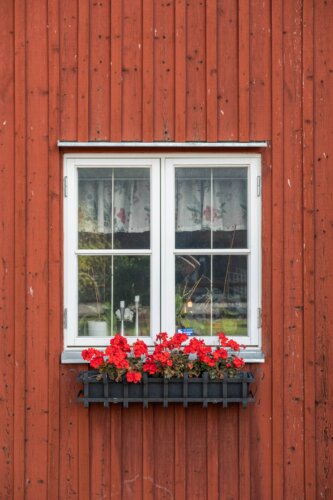
Emil i Lönneberga in the original Swedish version, is the story of Emil Svensson, a boy who lives with his family on the Katthult farm in Småland at the beginning of the 20th century.
There he plays pranks and gets into mischief, which always gets him into trouble with his father. On such occasions, he takes refuge in the woodshed, where he carves small wooden figures.
The genesis of this book has something to do with Astrid Lindgren’s family as well. She says that the idea for the figure came about when she was looking after her little grandson and telling him stories about Emil, to calm him down.
Ronja the Robber’s Daughter: a strong female protagonist
Ronja the Robber’s Daughter is another story with a strong female protagonist and one of Astrid Lindgren’s last works. Ronja grows up in the so-called Mattisburg castle with her parents and two hostile gangs of robbers who live in two parts of the castle separated by a lightning strike.
After she befriends the son of the enemy robber chief, tensions arise. However, these end in the two groups joining forces and the children deciding against taking over the leadership of the gangs.
We children from Bullerbü: Swedish idyll
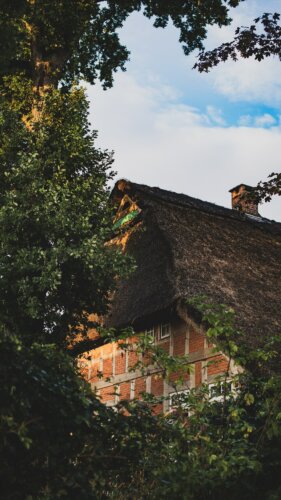
We Children of Bullerby is one of Astrid Lindgren’s most iconic works. It tells the story of idyllic life in Bullerbü (Bullerbyn in Swedish) from the perspective of 7-year-old Lisa.
The village of Bullerbü, which consists of three farms, is inhabited by a total of seven children with their families and servants. Everyday adventures in the countryside are experienced and told.
The story is inspired by the childhood of the author’s father, who comes from the village of Sevedstorp, which is said to have served as the model for Bullerbü. Astrid Lindgren’s older brother is also said to have been the model for the character Lasse.
The Brothers Lionheart: Astrid Lindgren’s most controversial work
With The Brothers Lionheart, Astrid Lindgren created a controversial work. This is due to the subject of death in a children’s book, which was sometimes criticised. The book is about two brothers, Karl, also known as Rusky (Skorpan), and Jonathan “Lionheart”. Karl is seriously ill and knows that he will probably die. Jonatan tries to ease his fears by telling him stories about the land of Nangijala, which awaits him after death.
Instead of Rusky, however, Jonatan dies first when he rescues his younger brother from a fire. Rusky, who soon afterwards thinks he is going to die when he falls asleep, actually meets his brother again in Nangijala. It is not clear whether he is dreaming or has actually died. He has several adventures with Jonatan, resulting in his older brother being paralysed. He tells him that there is another land after Nangijala, Nangilima. Rusky carries his brother on his back and jumps to his death with him, whereupon he exclaims: “I see the light!”
Critics accused Astrid Lindgren of glorifying suicide and dealing with topics that were too serious for a children’s book. The opposing side argued that it was symbolism that symbolised an acceptance of death in dreams and served to take away children’s fear of death.
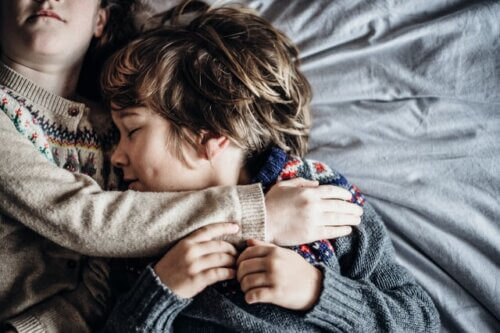
Adult literature: biographical and political works by Astrid Lindgren
Even though children’s literature makes up a large part of Astrid Lindgren’s work, she also published books for an adult audience, for example her war diaries 1939-1945 in Humanity has lost its mind. Overall, most of the works that are more likely to be read by an adult audience are biographical or political in nature.
Lex Lindgren: The Animal Protection Act on Astrid Lindgren’s 80th birthday
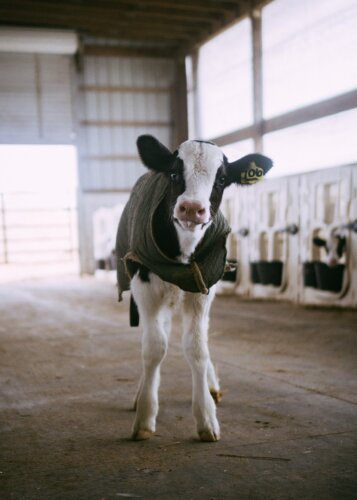
The latter applies, for example, to My cow wants to have fun (Min ko vill ha roligt), a testimony to Astrid Lindgren’s activism in animal welfare.
It contains contributions from both Astrid Lindgren and Kristina Forslund, a veterinarian who, together with the author, campaigned against factory farming and the problems associated with it. A large part comprises joint articles on these topics.
The resulting new animal protection law, which was passed on Astrid Lindgren’s 80th birthday and named Lex Lindgren, is particularly well known. However, this did not go far enough for the two women, as it did not, for example, increase the minimum size of chicken cages.
Autobiographical works
Astrid Lindgren’s best-known biographical work is probably her war diaries, which were published after her death in agreement with her family. In these she compiled newspaper articles and letters, among other things. These included letters that she had copied without authorisation while working for the Swedish intelligence service.
Other famous autobiographical works include Samuel August from Sevedstorp and Hanna i Hult (Swedish: Samuel August från Sevedstorp och Hanna i Hult), from which the story of Pippi Longstocking originates, various correspondence and other works about her childhood.
Travel destinations for Astrid Lindgren fans
In addition to the original of The Children of Bullerby, the village of Svedstorp, Näs Farm in Vimmerby, Astrid Lindgren’s birthplace, and Dalgatan 46, there are other destinations that Astrid Lindgren fans should not miss on their holiday in Sweden.
These include, for example, Astrid Lindgren’s World near Vimmerby, which offers children and adults the opportunity to experience the stories written by Astrid Lindgren up close. The settings of seven stories have been recreated in the small village and can be discovered by children without any restrictions.
The Junibacken Museum on the Djurgården peninsula in Stockholm, which was co-designed by Astrid Lindgren, is also worth a visit, where you can meet other famous children’s book characters as well as her characters. The fairytale train, which takes you through lovingly designed settings in 15 minutes, is particularly popular. Junibacken is also known for its numerous play and discovery opportunities. Instead of boring exhibitions, this museum offers children a great experience and is therefore an excellent excursion destination for families.
